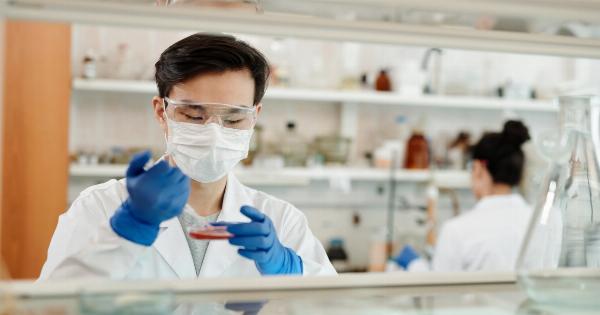Sexually transmitted diseases (STDs) are infections that are spread through sexual contact. They can be caused by bacteria, viruses, or parasites and can have a range of symptoms.
While some STDs may resolve on their own or with treatment, others can cause long-term complications if left untreated.
When it comes to the second most common STD, the answer may surprise you.
While many people may assume that conditions like gonorrhea or syphilis hold this title, the reality is that herpes simplex virus (HSV) takes the second spot in terms of prevalence. This article will delve into the details of HSV, how it spreads, its symptoms, and available treatment options.
Understanding Herpes Simplex Virus (HSV)
Herpes simplex virus (HSV) is a highly contagious infection that can be transmitted through various forms of sexual contact, including vaginal, anal, and oral sex. HSV is categorized into two types: HSV-1 and HSV-2.
HSV-1 vs. HSV-2
HSV-1 is commonly associated with oral herpes, characterized by cold sores or fever blisters around the mouth. It can also be transmitted to the genitals through oral-genital contact, leading to genital herpes.
HSV-2, on the other hand, is primarily responsible for genital herpes, characterized by clusters of painful blisters and sores in the genital area.
Prevalence of HSV
According to the World Health Organization (WHO), an estimated 3.7 billion people under the age of 50 are infected with HSV-1 worldwide. The number of people with HSV-2 is lower, with an estimated 417 million people infected globally.
How is HSV Transmitted?
HSV can be transmitted through various forms of sexual contact, including:.
- Unprotected vaginal, anal, or oral sex with an infected partner
- Skin-to-skin contact with an active herpes sore or blister
- Engaging in sexual activity during an outbreak
Symptoms of HSV Infection
HSV infection may cause different symptoms in different individuals. Some people may experience frequent and severe outbreaks, while others may remain asymptomatic, meaning they show no visible signs of infection.
Common symptoms of genital herpes include:.
- Painful blisters or open sores in the genital area
- Burning or itching sensation before the outbreak
- Pain or discomfort during urination
- Flu-like symptoms, such as fever and body aches
Diagnostics and Testing
If you suspect you have been exposed to or infected with HSV, it is important to seek medical advice. A healthcare provider can diagnose HSV through:.
- Physical examination of the affected area
- Collecting a sample from an active lesion for laboratory testing
- Blood tests to detect the presence of HSV antibodies
Managing and Treating HSV
While there is no cure for HSV, antiviral medications can help manage the symptoms and reduce the frequency and severity of outbreaks.
These medications, such as acyclovir, famciclovir, and valacyclovir, are available by prescription and can also be used as suppressive therapy to reduce the risk of transmission to sexual partners.
Prevention and Safe Practices
Practicing safe sex is crucial in preventing the transmission of HSV. Here are some measures to reduce the risk:.
- Using condoms or dental dams consistently and correctly during sexual activity
- Avoiding sexual contact during outbreaks or when symptoms are present
- Communicating openly with sexual partners about STD status
- Getting vaccinated against other STDs, such as HPV
The Emotional Impact of HSV
Being diagnosed with HSV, especially genital herpes, can have a significant emotional impact. It is important to remember that HSV is a common infection, and many people lead normal, healthy lives with the virus.
Seeking support from healthcare professionals, partners, or support groups can be beneficial in coping with the diagnosis and managing the psychological effects.
Breaking the Stigma
Due to the highly stigmatized nature of STDs, many individuals may feel reluctant to share their diagnosis or seek help. It is crucial to break the stigma surrounding STDs and create a safe space for open discussions about sexual health.
Education, awareness, and understanding play key roles in reducing the spread of STDs, including HSV.





























